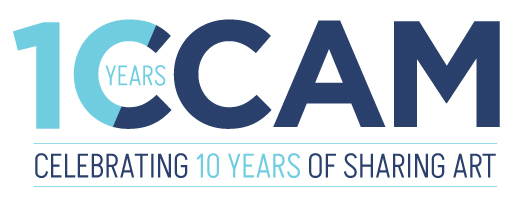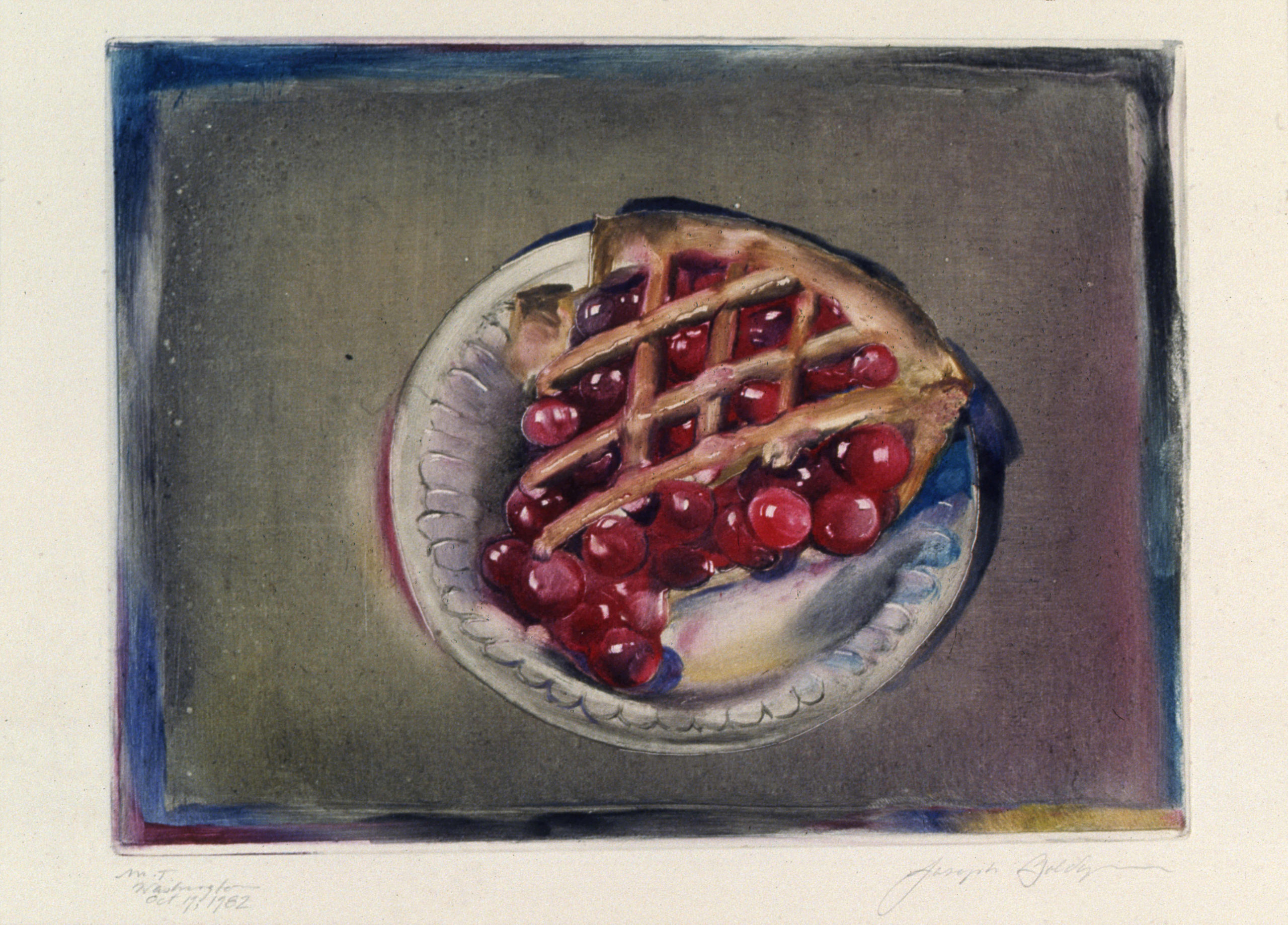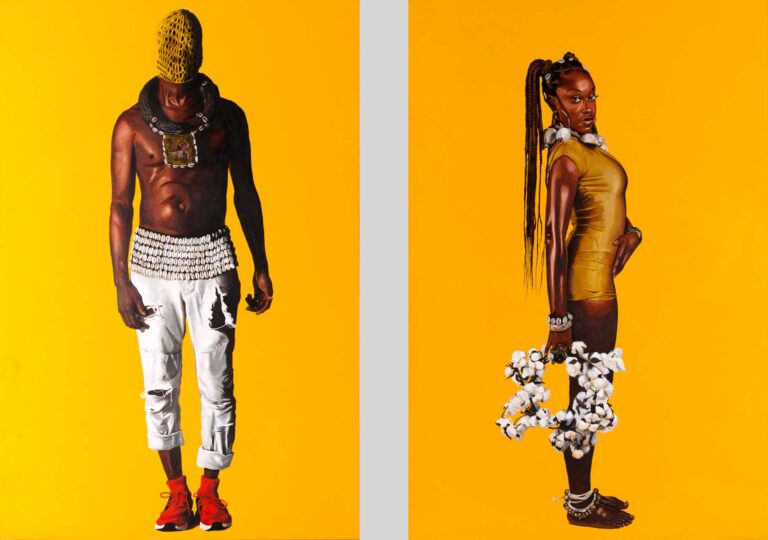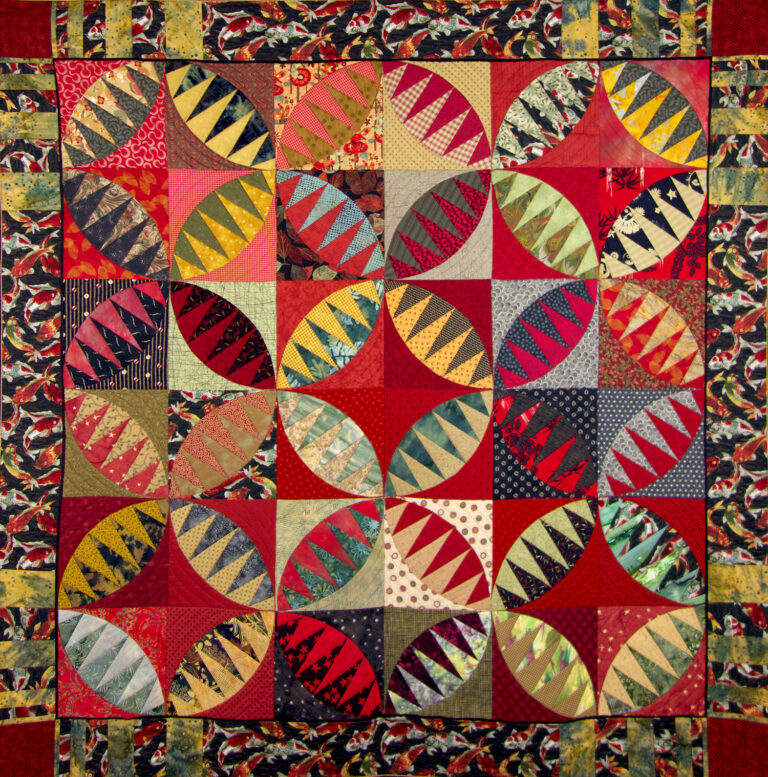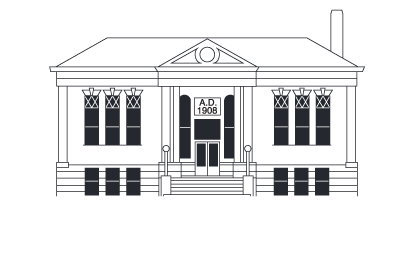Cherry Pie, October 19, 1982, Joseph Goldyne, American, 1942, Monotype, 7-3/4 x 5-3/4 inches, Courtesy of Joseph Goldyne
Joseph Goldyne’s works are an autobiography of sorts. His images include such personal objects as favored books with time-softened corners, well-worn jackets, clothing hanging from hooks or packed into closets, a parrot tulip bending in its crystal vase.
Viewers who pause to look at these works might recall the gooey goodness of cherry pie on a hot July day, falling under the trance of Anne Frank’s diary or the soft, light, cottony feel of a favorite summer robe. At heart, these works are sweet mementos of life’s passage.
But Goldyne’s interest isn’t limited to intimate, closely observed objects. During the last 14 years, he has depicted waterfalls from countless vantage points . . . water plunging unimpeded, cascading over boulders, falling in small rivulets or gushing in such great torrents that only clouds of mist are visible. Sometimes the artist depicts water as it comes in contact with stones, gravel or pools of water.
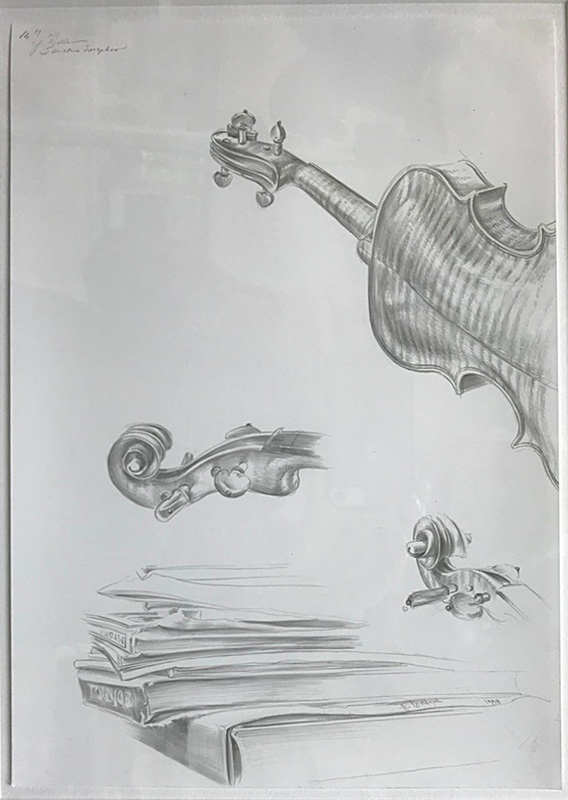
Sactus Seraphin, Joseph Goldyne, American, 1942, Goldpoint drawing, Courtesy of Joseph Goldyne
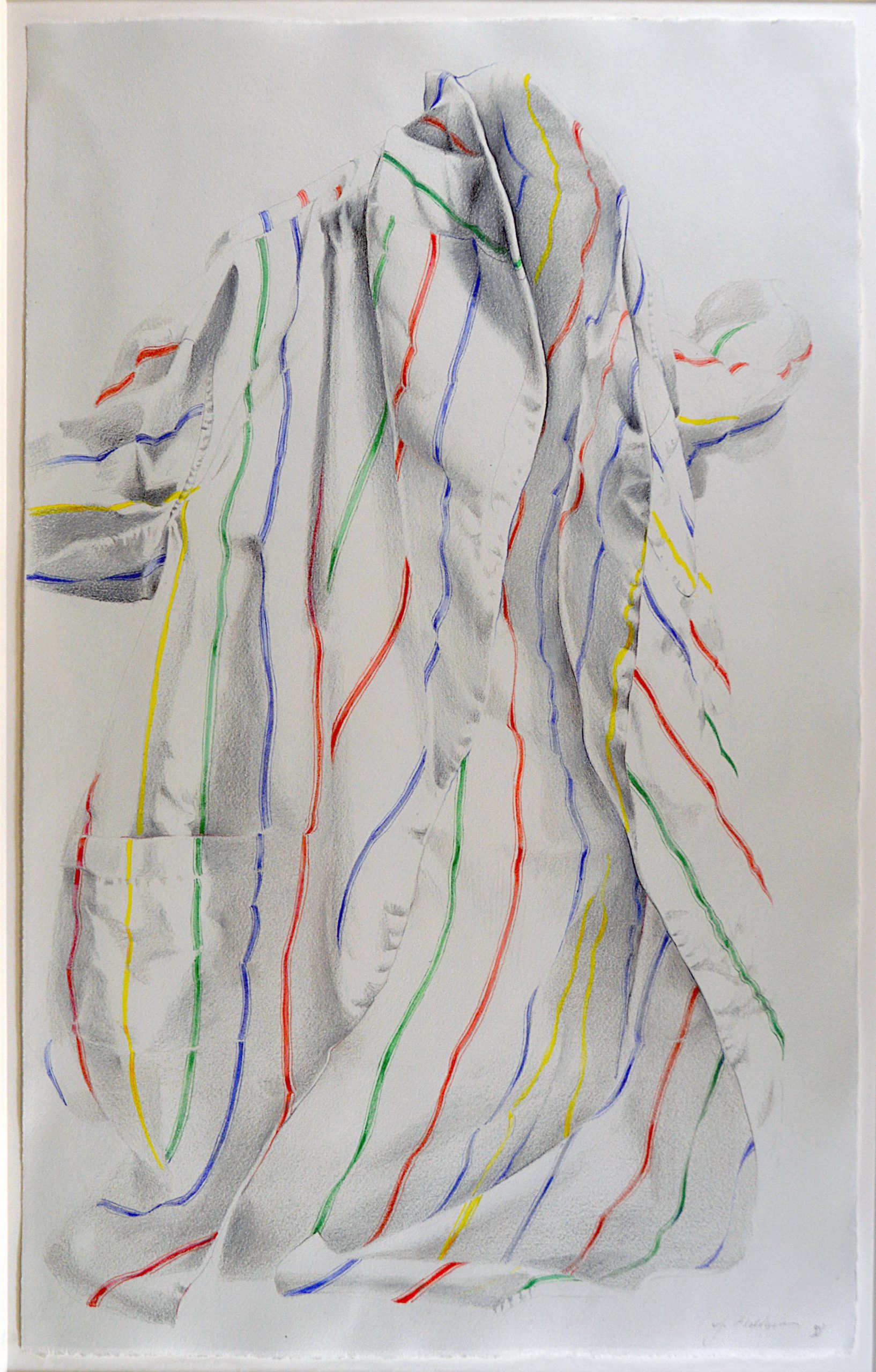
Robe, 1998, Joseph Goldyne, American, 1942, Color pencil drawing, 19-1/4 x 12-1/4 inches, Courtesy of Joseph Goldyne
Goldyne is keenly interested in art history and his works reflect a multiplicity of sources. Joseph Goldyne: Ephemeral Memories includes works from his personal collection by several such consequential artists. A small oil sketch by the renowned 19th century painter of America’s mountains, Albert Bierstadt, exemplifies the unfathomable dynamism of nature, even in the hush of sundown.
Five images of waterfalls by Japanese artists of the 18th and 19th Century Shijo School reflect a quiet reverence for nature. Their use of the elongated vertical format, their restriction of focus to the waterfall and their minimal application of paint are echoed in Goldyne’s approach.
In some respects, Goldyne’s waterfalls correspond to his images of jackets and shirts. Like the clothing – which has both a visible, public side and an obscured, private side – water and haze veil sand, soil and gravel, the unseen substances that erode the land. In some images, the ceaseless torrents seem to have cleaved the earth into two separate halves. Goldyne freezes these imagined moments within time’s continuum, each droplet, each particle binding with others to do its part.
Goldyne received a Bachelor of Arts degree in art history at the University of California, Berkeley, and then entered the University of California, San Francisco, where, in 1968, he earned an M.D. Still longing to practice art, he enrolled at Harvard University for a master’s degree in art history. Hints of these two sides of Goldyne’s nature are visible in the balance of sensibility with technical exactitude that has characterized his life’s work.
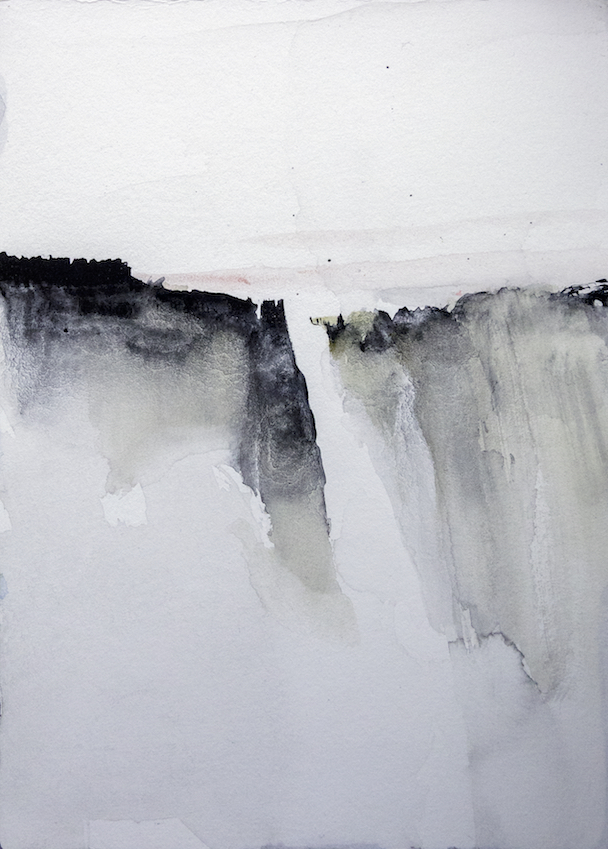
Imaginary Waterfalls P-XIV #2, 2011, Joseph Goldyne, American, 1942, India Ink, 7-1/2 x 5-1/2 inches, Karen and Robert Duncan Collection
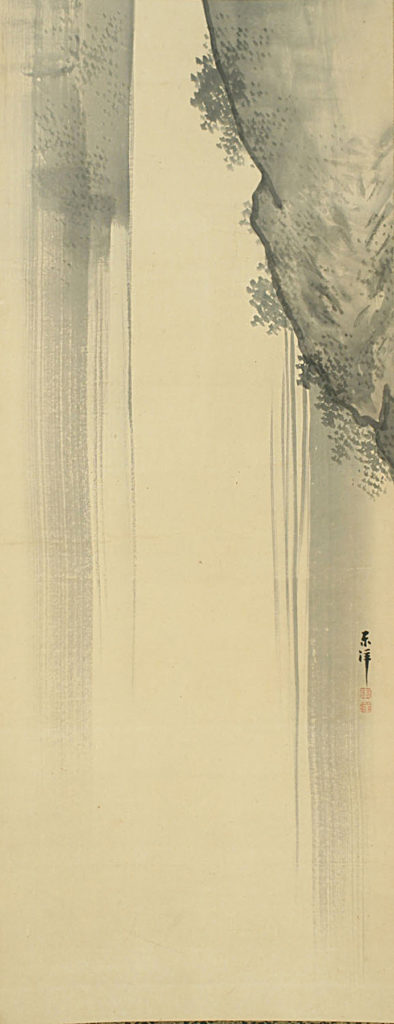
Waterfall, c. 1800, Azuma Toyo, Japanese, 1755 – 1839, Sumi on paper, : 47 x 18-1/4 inches, Courtesy of Joseph Goldyne
Acknowledgements
A project of this scope requires the coordination, skills and dedication of a sizeable team. Thus, a debt of gratitude is due every individual involved in the organization of the Clarinda Carnegie Art Museum’s exhibition, Joseph Goldyne: Ephemeral Memories and the accompanying catalog.
Primarily, we would like to thank Joseph Goldyne, whose ability to create extraordinary universal statements from ordinary moments, has made this project possible. He and his family have generously loaned and gifted art to CCAM, giving Midwesterners the opportunity to share his unique vision for years to come. It is a privilege for regional audiences to have access to these eloquent works.

Hide and Seek, 1985-1994, Joseph Goldyne, American, 1942, Aquatint and drypoint with watercolor, 15 x 12 inches, Karen and Robert Duncan Collection

Eggs and Olives, 1981, Joseph Goldyne, American, 1942, Monotype, Courtesy of Joseph Goldyne
Thankfully, this catalogue will carry that pleasure farther afield. Special appreciation goes to Anne Kohs & Associates for coordinating its design, layout, photography and production. Kohs was ably assisted by Diane Roby, who assembled the artist’s biography, bibliography and collections, and edited content on the authors’ behalf, and by Pam Rino Evans, who organized and coordinated the photography and content. Gary Hawkey, John Bailey and Stephanie Lock, at iocolor, LLP, Seattle, have set the standard for expert color management. Their coordination with Artron Color Printing Company, China, has assured top-quality, professional printing and binding. The Joseph Goldyne catalogs are available through the CCAM website, on site or by contacting Director Trish Bergren at director@clarindacarnegieartmuseum.com or 712-435-0007.
Special recognition goes to Clarinda Carnegie Art Museum founders Karen and Robert Duncan for graciously continuing to share their art, hearts and resources. Their enthusiastic support of the Goldyne project advances their goal of making art an accessible part of human experience.
All photographs by: M. Lee Fatheree
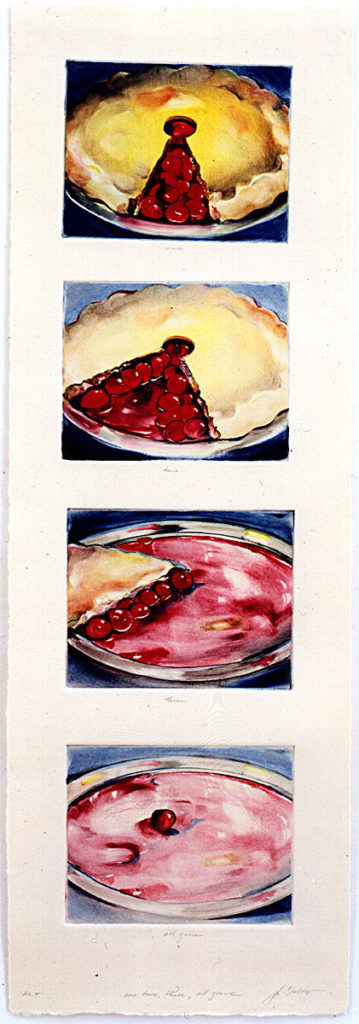
One, two, three, All Gone, 1980, Joseph Goldyne, American, 1942, 4 Monotypes, Courtesy of Joseph Goldyne
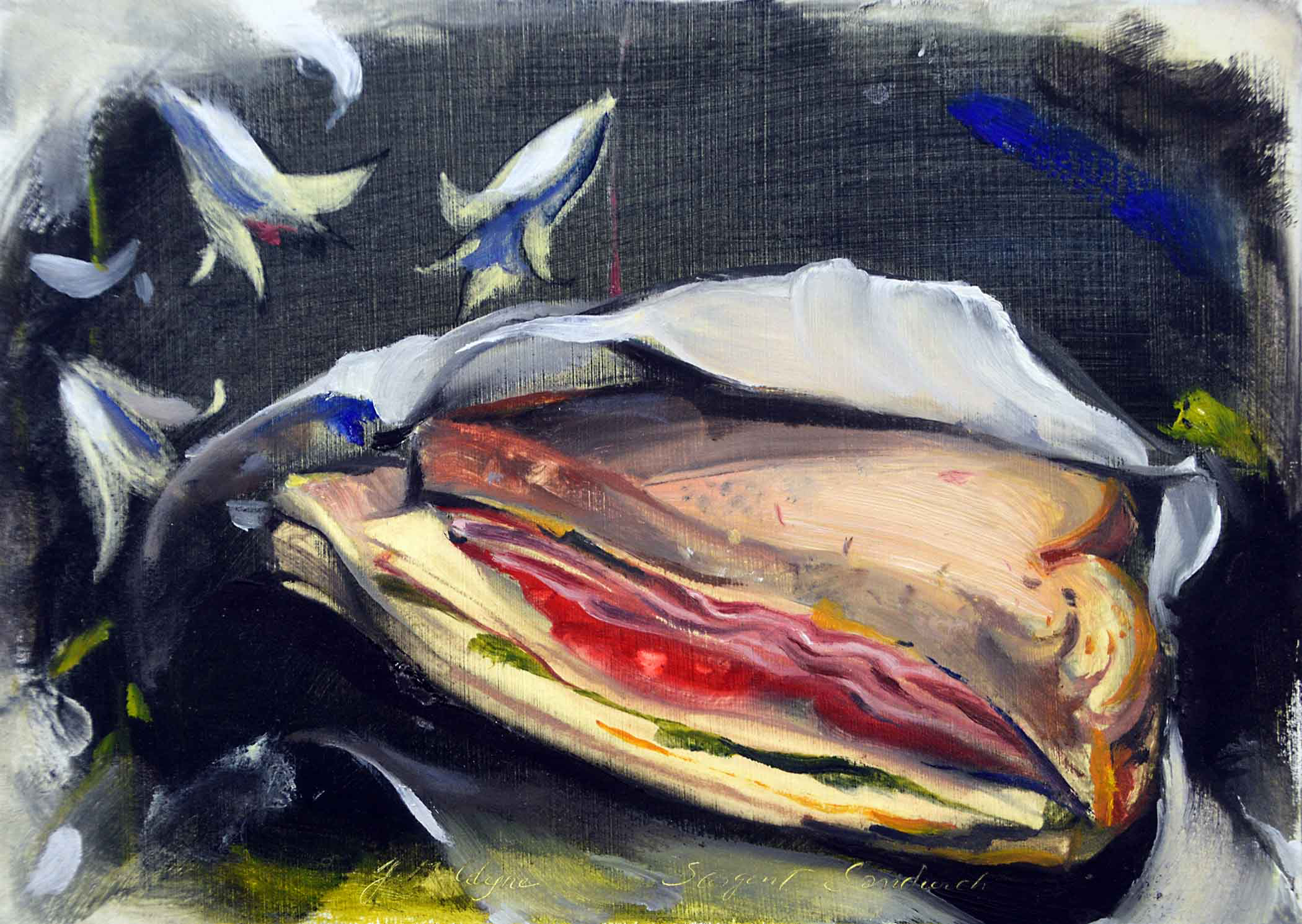
Unwrapped Pastrami, Tomato and Swiss Sandwich for John Singer Sargent, 1999, Joseph Goldyne, American, 1942, Oil painting on gessoed paper, Courtesy of Joseph Goldyne
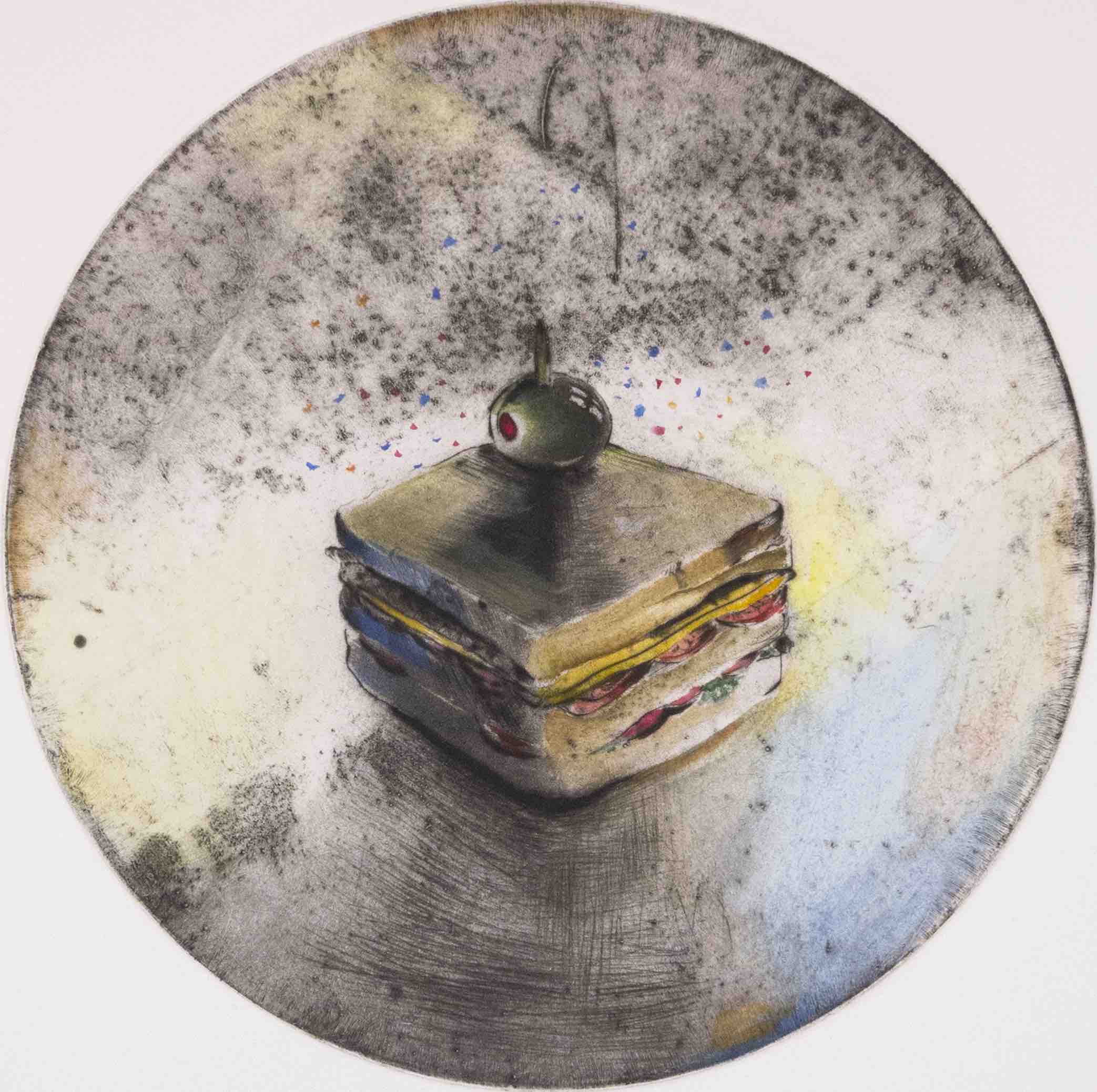
Min’s Mysterious Sandwich No. 6, 1975 / 2003, Joseph Goldyne, ,American, 1942, Etching, aquatint and drypoint, 12 x 12 inches, Clarinda Carnegie Art Museum Collection

Parka and Ticket, 1996, Joseph Goldyne, American, 1942, Monoprint, Courtesy of Joseph Goldyne

Parka and Ticket, 1996, Joseph Goldyne, American, 1942, Etching with retrossage, Courtesy of Joseph Goldyne
